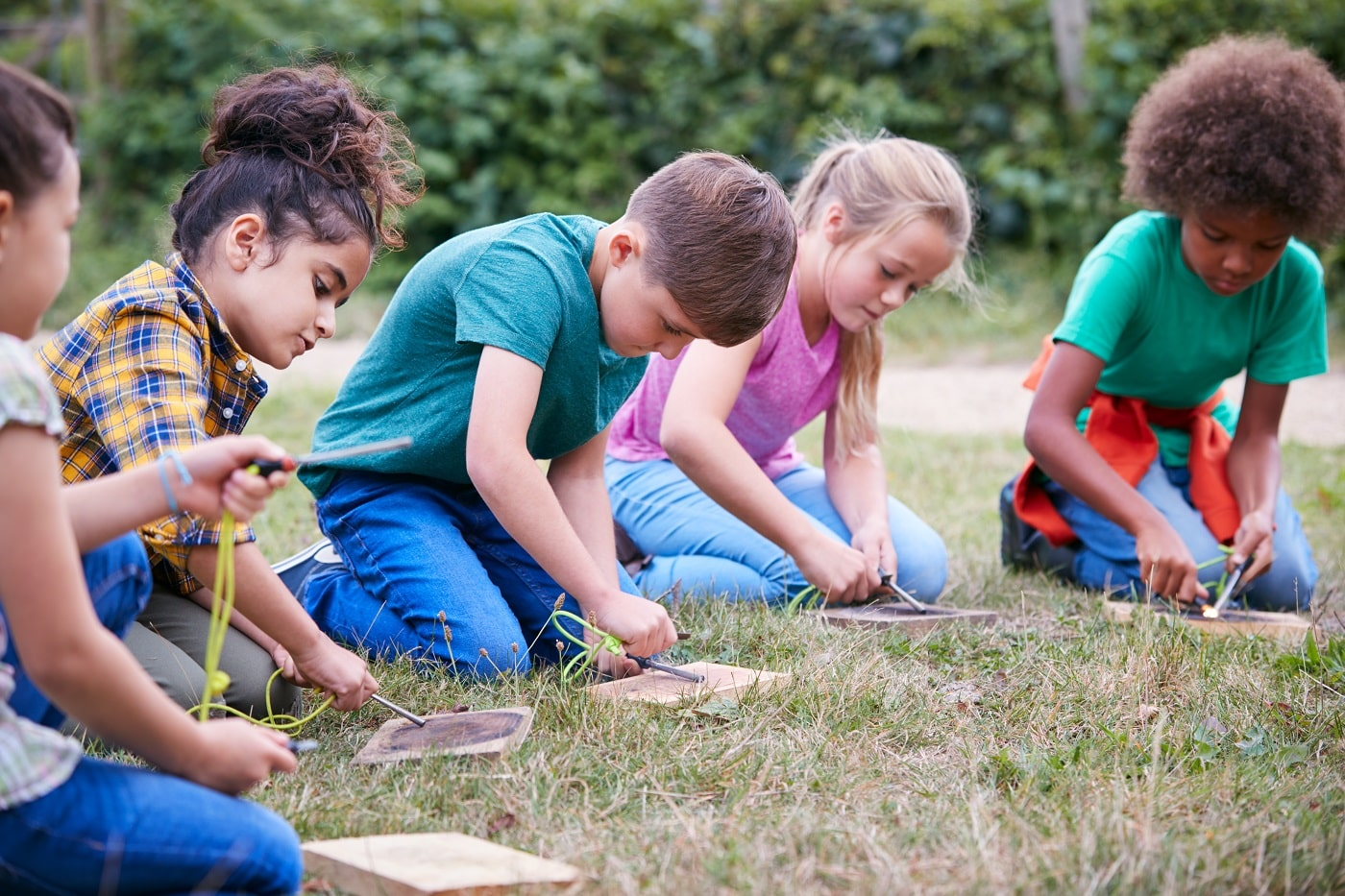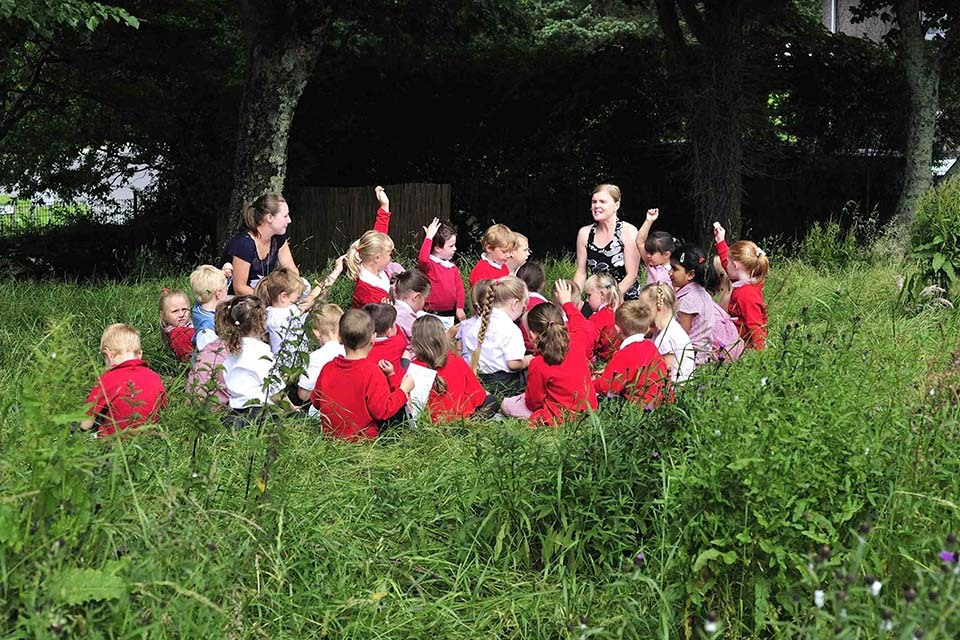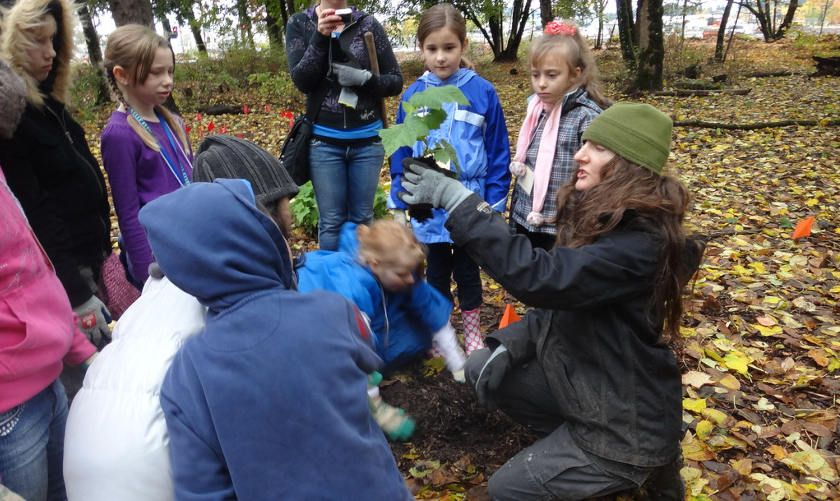Outdoor learning offers educators the opportunity for contextualized child development to expand classroom-based practices. Researchers underline that outdoor activities contribute to effective curriculum delivery, as well as inherent educational value. In the UK, the promotion of outdoor learning is given significant attention. In particular, the national curriculum prescribes teaching students “take part in outdoor and adventurous activity challenges both individually and within a team”. The country also has a number of key policies to promote outdoor learning in the early years setting. One of the most common is the Early Years Foundation Stage (YEFS), which obliges educational institutions to offer both indoor and outdoor learning spaces. There are also other projects that specifically focus on the development and implementation of appropriate teaching practices within outdoor learning in the UK, including the Natural Connections Demonstration Project, Defra 25-Year Plan, and Ofsted: Learning Outside The Classroom. Thus, the early education setting in the UK currently offers children extensive opportunities to explore the outdoor environment through learning activities.

Adults, including teachers and family, play a significant role in outdoor learning. First of all, it is necessary to create a safe environment for children, which at the same time encourages exploration. Another priority is the effective integration of outdoor activities into the curriculum to expand educational opportunities. In this regard, a special role is played by professional educators who can effectively use the environmental elements to develop key skills in the early years setting. Finally, adults perform an important function of teaching children to communicate with nature and realize themselves as part of the environment. Gray underlines that “children should be provided with an opportunity to develop a sense of awe, delight and connection with nature”. Thus, adults act as creators of appropriate outdoor space and guides for interacting with it to maximize learning outcomes.

Outdoor learning has both advantages and barriers, which should be considered. First of all, outdoor activities promote research and allow children to learn more about nature. Additionally, outdoor learning contributes more to the visual physical development of children. It is also important that these activities allow you to integrate a large collaboration with peers, developing the communication skills of children. Researchers note that the main barrier to effective outdoor learning is parents’ and educators’ attitudes. Thus, it is necessary to expand the awareness of adults about the possibilities of outdoor learning and their integration into the early years education setting. Among other significant barriers, it is also necessary to highlight the possible shortcomings of curriculum and infrastructure design.
The natural environment plays a key role in the effectiveness of outdoor learning. First of all, outdoor activities allow children to participate more in physical activity, which is good for their health. A more informal environment promotes research skills and independent exploration. Additionally, interaction with peers and adults in an outdoor setting helps develop communication skills.

Finally, the natural environment offers the opportunity to explore the role of the environment in human life, expanding the horizons of children’s knowledge.
Reference List
James J.K, Williams, T. School-based experiential outdoor education: a neglected necessity. Journal of Experiential Education. 2017;40(1):58-71.
Merewether J. Making the outdoors visible in pedagogical documentation. In: Fleet A, Patterson C, Robertson, J, editors. Pedagogical documentation in Early Years practice: seeing through multiple perspectives. London: SAGE; 2017. p. 131-145.
Harvey M, Rankine K, Jensen R. Outdoor learning hubs [Internet]. West Lothian Council; 2017. Web.
Quibbell T, Charlton J, Law J. Wilderness schooling: a controlled trial of the impact of an outdoor education programme on attainment outcomes in primary school pupils. British Educational Research Journal. 2017;43(3):572-587.
Department for Education. The national curriculum in England [Internet]. Department for Education; 2013. Web.
Department for Education. Statutory framework for the early years foundation stage [Internet]. Department for Education; 2021. Web.
Natural England. Natural Connections Demonstration Project, 2012- 2016: final report [Internet]. Natural England; 2016. Web.
HM Government. A green future: Our 25 Year Plan to improve the environment [Internet]. HM Government; 2018. Web.
Ofsted. Learning outside the classroom [Internet]. Ofsted; 2008. Web.
Wickett K, Huggins V. Very young children learning outdoors: its place in the schooling system. In: Waite, S, editor. Children learning outside the classroom from birth to eleven. London: SAGE; 2017. pp 2-3.
Wishart L, Rouse E. Pedagogies of outdoor spaces: an early childhood educator professional learning journey. Early Child Development and Care. 2018;189(14):2284-2298.
Gray T. Outdoor learning: not new, just newly important. Curriculum Perspectives. 2018;38:145–149.
Oberle E et al. Support factors and barriers for outdoor learning in elementary schools: a systemic perspective. American Journal of Health Education. 2021;52(5):251-265.
Bilton H, Bento G, Dias G. Taking the first steps outside. Under threes learning and developing in the natural environment. Abingdon: Routledge; 2017.
Bilton H. Values stop play? Teachers’ attitudes to the early years outdoor environment. Early Child Development and Care. 2020;190(1):12-20.
Grupo de niños en viaje de camping al aire libre aprender a hacer fuego [Internet]. Envato Elements. 2022. Web.
Burgess L. The Thin Green Line – Why Outdoor Learning May Have More Positives Than You Think [Internet]. Teachwire. 2022. Web.
Should Outdoor Learning in Schools be Compulsory? [Internet]. outlearn. 2022. Web.
